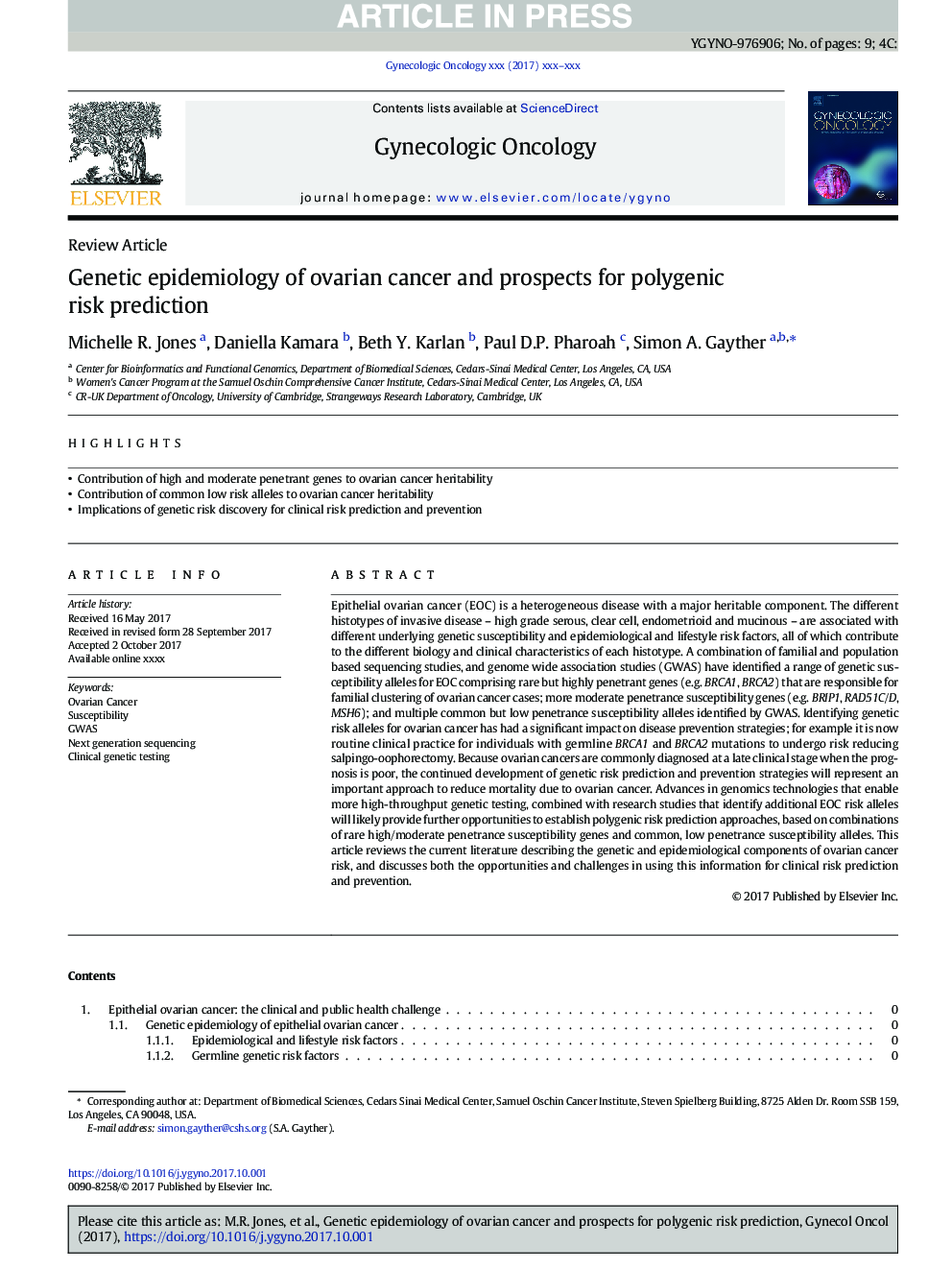| کد مقاله | کد نشریه | سال انتشار | مقاله انگلیسی | نسخه تمام متن |
|---|---|---|---|---|
| 8780821 | 1600071 | 2017 | 9 صفحه PDF | دانلود رایگان |
عنوان انگلیسی مقاله ISI
Genetic epidemiology of ovarian cancer and prospects for polygenic risk prediction
ترجمه فارسی عنوان
اپیدمیولوژی ژنتیک سرطان تخمدان و چشم انداز پیش بینی ریسک پلیسیایی
دانلود مقاله + سفارش ترجمه
دانلود مقاله ISI انگلیسی
رایگان برای ایرانیان
کلمات کلیدی
موضوعات مرتبط
علوم پزشکی و سلامت
پزشکی و دندانپزشکی
زنان، زایمان و بهداشت زنان
چکیده انگلیسی
Epithelial ovarian cancer (EOC) is a heterogeneous disease with a major heritable component. The different histotypes of invasive disease - high grade serous, clear cell, endometrioid and mucinous - are associated with different underlying genetic susceptibility and epidemiological and lifestyle risk factors, all of which contribute to the different biology and clinical characteristics of each histotype. A combination of familial and population based sequencing studies, and genome wide association studies (GWAS) have identified a range of genetic susceptibility alleles for EOC comprising rare but highly penetrant genes (e.g. BRCA1, BRCA2) that are responsible for familial clustering of ovarian cancer cases; more moderate penetrance susceptibility genes (e.g. BRIP1, RAD51C/D, MSH6); and multiple common but low penetrance susceptibility alleles identified by GWAS. Identifying genetic risk alleles for ovarian cancer has had a significant impact on disease prevention strategies; for example it is now routine clinical practice for individuals with germline BRCA1 and BRCA2 mutations to undergo risk reducing salpingo-oophorectomy. Because ovarian cancers are commonly diagnosed at a late clinical stage when the prognosis is poor, the continued development of genetic risk prediction and prevention strategies will represent an important approach to reduce mortality due to ovarian cancer. Advances in genomics technologies that enable more high-throughput genetic testing, combined with research studies that identify additional EOC risk alleles will likely provide further opportunities to establish polygenic risk prediction approaches, based on combinations of rare high/moderate penetrance susceptibility genes and common, low penetrance susceptibility alleles. This article reviews the current literature describing the genetic and epidemiological components of ovarian cancer risk, and discusses both the opportunities and challenges in using this information for clinical risk prediction and prevention.
ناشر
Database: Elsevier - ScienceDirect (ساینس دایرکت)
Journal: Gynecologic Oncology - Volume 147, Issue 3, December 2017, Pages 705-713
Journal: Gynecologic Oncology - Volume 147, Issue 3, December 2017, Pages 705-713
نویسندگان
Michelle R. Jones, Daniella Kamara, Beth Y. Karlan, Paul D.P. Pharoah, Simon A. Gayther,
